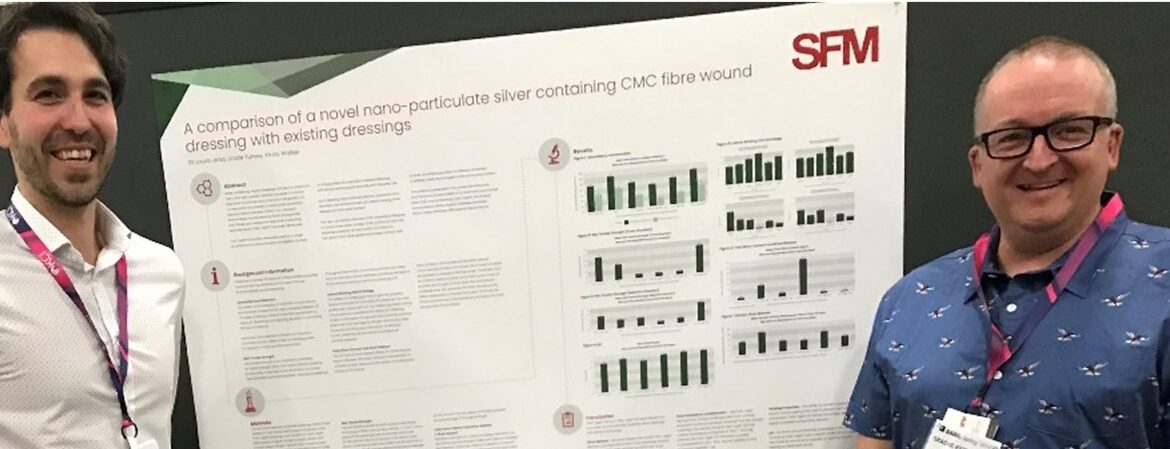By Dr Graeme Kettlewell, SFM, R&D Director, January 2021.
As the midway point of my career approaches, and with it the realisation that the Nobel Prize, or the eponymous chemical reaction are in all probability not going to happen, I’m drawn to reflect – why do I do this? As scientists, what is the motivation that drives us to get up each day and try another experiment in a series that hasn’t yet yielded the answers we wanted; to argue yet again with a patent examiner we think is missing the point, again; or to further clarify the response to a regulator’s question?
While we can’t know what there is yet to be discovered and invented, it is probably fair to say that the era of truly groundbreaking and lifechanging discoveries, by the likes of Darwin, Galileo Galilei, Curie, Fleming, Einstein and Wallace Carothers has gone – all inspirational scientists who made seismic changes to the way we understand and live in the world. Although that said, Uğur Şahin and Özlem Türeci, the couple who, together, recently developed one of the COVID-19 vaccines may have grounds to disagree! But this doesn’t stop the unadulterated joy of seeing a fibre we’ve made perform as we intended, of seeing the data that shows that the theory we have worked on for months is correct, the patent granted, the regulator approving a medical device we have developed or even more evocative, seeing a patient treated with a product we have developed.
At a trade show a few years ago I saw a poster showing a product we developed here at SFM alongside one of the market leaders. Standing back and watching clinicians on the distributor’s booth made me realise that we are making a real and significant difference to patients’ lives – every day.
Our dressings are helping all those who, like the 40% of patients who felt pain for up to one hour, following a dressing change,1 and when asked, said that the pain associated with a dressing change was the worst part of living with a wound. SFM’s gel-forming dressings are specifically designed with structural integrity across the whole dressing so as to remain intact on removal. This integrity, unique to SFM’s gel-forming fibre dressings, helps reduce the risk of fibre shedding and critically helps reduce pain at dressing change.
SFM’s gel forming carboxymethyl cellulose dressings are designed to conform closely to the wound bed, thereby minimising the space available for fluid to pool and potentially for possibly harmful bacteria to grow. In an in vitro study SFM’s gel-forming dressings conformed more closely to the wound bed than a commercially available dressing did.
This is what makes us get up in the morning, this is what drives us do what we do, making a real difference to individual patient’s daily lives.
Making a tangible difference to patients’ lives. And therein lies the answer to my original question – that’s why I do this.
Image. Commercially available dressing (left) showing gaps between the dressing and the simulated wound bed, and SFM’s gel-forming carboxymethyl cellulose dressing (right) showing no gaps. Both dressings have been dyed to aid visualisation.
In a series of posters at SAWC 2019,2-4 SFM presented on truly groundbreaking technology developed here in Coventry in collaboration with scientists from around the world. In this technology, originally cleared by the US regulators in 2018 and scheduled for launch with selected partners in 2021, a novel wound dressing containing silver is compared to existing wound dressings.
Using silver nanoparticles spread within the fibres, the gel-forming carboxymethyl cellulose dressing is effective is stopping potentially harmful bacteria, yeast and mould forming in the wound over a sustained period of time.
According to Shi-Bo Zou et al,5 in a review of cytotoxicity of silver dressings on diabetic fibroblasts, cytotoxic silver dressings significantly change the cell morphology and decrease cell proliferation and collagen synthesis of diabetic fibroblasts. The authors concluded that silver dressings should be used with caution when treating diabetic wounds. What sets SFM’s gel forming carboxymethyl cellulose dressing with silver apart is that it is non-cytotoxic.
As SFM’s gel-forming carboxymethyl cellulose dressing with silver is non-cytotoxic, the risk of damaging newly formed cells in a wound bed may be reduced.6 This novel silver nanotechnology developed by my amazing colleagues could have the potential to change the way in which silver dressings are viewed, this is what makes me get up in the morning, this is what drives us do what we do, making a real difference to patients’ daily lives.
Enough about me! What motivates you in your research, and gets you out of bed and into work each day? Please share in the comments below.
References
1. Price et al. Dressing-related pain in patients with chronic wounds: an international patient perspective. Int Wound J 2008;5:159–171.
2. Finnegan et al. A novel nano-particulate silver containing gel-forming fibre wound dressing. Poster Presentation SAWC 2019.
3. Jinks et al. A comparison of a novel nano-particulate silver containing CMC fibre wound dressing with existing dressings. Poster Presentation SAWC 2019.
4. Turvey et al. A study on the pharmacokinetics of a novel nano-particulate silver containing gel-forming fibre wound dressing. Poster Presentation SAWC 2019.
5. Shi-Bo Zou et al. Cytotoxicity of silver dressings on diabetic fibroblasts. Int Wound J . 2013 Jun;10(3):306-12
6. Venus Ag – Report – Wound Healing. Data on file VenAgTR-25



